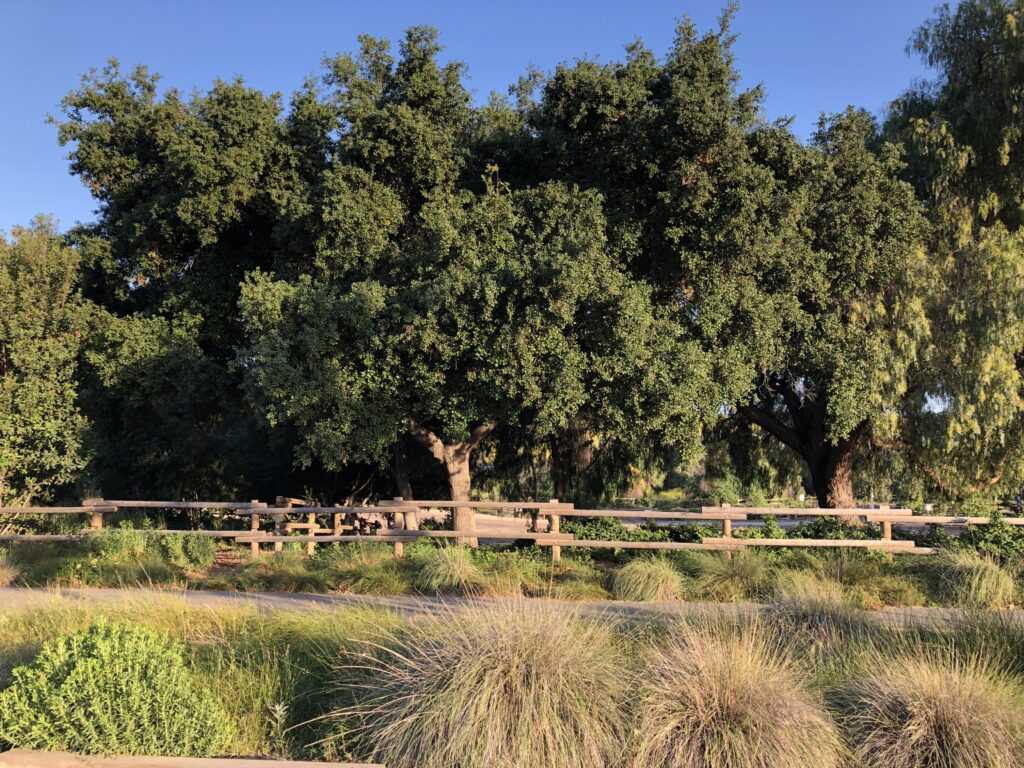
November 4, 2021
Association of Professional Landscape Designers, California Chapter
Mike Evans, Tree of Life Nursery
CRITERIA FOR LANDSCAPE DESIGN
Aesthetic
Engagement (human)
Appearance
Wildlife – urban habitat
Biodiversity
Target species
Beneficial invertebrates (including pollinators)
Locally relevant
Practical
Water conservation
Sensible maintenance needs
Sustainable, regenerative
Cost effective
Pragmatic
Watershed, erosion
Availability of materials
Fire safety
NATURALISTIC DESIGN
Meets criteria listed above
NATIVE PLANTS
Components of naturalistic design
Turgidity – water content in leaves and stems
FIRE SAFETY
Important, but when put as top priority in Criteria, limits everything else
Evaluate each site and prioritize accordingly
Landscape design for fire safety cannot completely mitigate previous mistakes
Regional planning blunders
Site design errors
Location, access
Architecture, building materials
Intended use of site
BASIC CONSIDERATIONS
Likelihood of fire
Source of ignition
Conditions under which fire would be a serious threat
Potential severity of fire
Most vulnerable places or site factors
BASIC PRINCIPLES – PLANTS
Avoid using plants with high content volatile oil
Many conifer species
Laurel sumac (Malosma laurina)
Chamise (Adenostoma fasciculatum)
Avoid using perennials and annuals that can become “flash fuels” on the ground
Deerweed (Lotus scoparius)
Tall, tangles annuals from seed i.e.: tall lupines and phacelia
Cool season grasses which are summer dry/dormant
Avoid using subshrubs that can build up dead wood in their centers
California buckwheat (Eriogonum fasciculatum) – tall growing forms
Sages (Salvia species) – tall growing forms
Coastal sagebrush – (Artemisia californica) – tall growing forms
Avoid creating fuel ladders
Low, medium, and tall plants – don’t plant close to each other
Avoid overcrowding
Proper spacing
Planned succession
Plan for pruning maintenance, short and long term
Keep low plants low, promoting lots of new growth
Keep medium and tall plants thinned, removing inner branches
Keep dead wood out of all plants
Keep invasive exotics out
BASIC PRINCIPLES – DESIGN
Consider all the criteria
Place fire safety in in proper place in the order of considerations
PLANTS – LOW
Grindelia stricta
Baccharis pilularis (groundcover varieties)
Iva hayesiana
Ceanothus (groundcover varieties)
Arctostaphylos (groundcover varieties)
Ribes viburnifolium (shade)
Salvia (low cultivars)
Eriogonum (low cultivars)
Adenostoma (low cultivars, i.e.; ‘Nicolas’)
PLANTS – MEDIUM
Rhamnus californica (low varieties)
Rhus integrifolia, R. ovata
Ceanothus species and cultivars (medium height)
Arctostaphylos species and cultivars (medium height)
Cercocarpus betuloides
PLANTS – TALL
Quercus species
Prosopis species
Prunus lyonii
Lyonothamnus floribundus ssp. asplenifolius
PLANTS – SPECIMEN
Nolina species
Yucca species
Agave species
PLANTS – FIRE RETARDANT AND FIRE RESPONDENT
Isocoma menziesii
Ericameria species
Atriplex species
Berberis nevinii
Simmondsia chinensis
Shepherdia argentea
Prunus ilicifolia
Sphaeralcea ambigua
Viguiera laciniata
Calliandra californica
Sphaeralcea ambigua
Cleome arborea
Rhamnus californica
PLANTS – SHADE
Ribes viburnifolium
Symphoricarpos mollis
Iris ‘Pacific Coast Hybrids’
Heuchera maxima plus cultivars
Solidago californica
Monardella species
Fragaria californica
Potentilla californica
Rhamnus californica
Philadelphus californica
Arctostaphylos (groundcover varieties)
Ribes species (currants and gooseberries)
PLANTING COMBINATIONS
Opuntia littoralis patches, or rock outcrops interplanted with:
Romneya ‘White Cloud’
Rosa californica
Sambucus mexicana
Epilobium californicum (many cultivars available)
Eriogonum species
Gambelia speciosa
Verbena lilacina
Mirabilis californica
Mimulus aurantiacus, M. puniceus
Other showy low growing flowering natives
Plus: All of the following, interplanted with Iva)
Iva hayesiana – nondescript dull green groundcover interplanted with:
All of the above (interplanted with Opuntia) plus:
Mimulus aurantiacus, M. puniceus
Penstemon spectabilis
Venegasia carpesioides
Viguiera laciniata
Hesperoyucca whipplei
Heteromeles arbutifolia
Other showy low growing flowering natives
BARE EARTH, AGGREGATE TOPDRESS
Strategic placement
Aesthetic design
Bisected by plantings
Effective wildlife habitat
Pollinators, especially native bees
Ecological “Edge Effect”
Planted with xeric species
Agave species
Opuntia species
Yucca schidigera
Salvia species and cultivars
Eriogonum species
Condea (Hyptis) emoryi
Fallugia paradoxa
Trichostema lanatum
Arctostaphylos species and cultivars
tall, thineed, artfully pruned
California native plants
Resilient to human efforts to reduce fire ”risk”
(to a point)
Resilient to fire
Naturalistic design employing nature’s examples
Biodiversity
Beauty in truly sustainable landscapes
FIRE SAFE, FIRE CONSIDERATE, FIRE RESILIENT
Develop a design philosophy taking examples from nature’s beauty and biodiversity to make functionally sustainable gardens that are fire-safe (well, more like fire considerate).
Use only native plants in fire-safe landscapes because the pressures of land development and vegetation control statewide in the name of “fire prevention” are so great.simply stated we have to:
“Do enough before it’s too late.”
Richard Stephen Felger (1926-2020)
NATURE IS ALWAYS THE MODEL